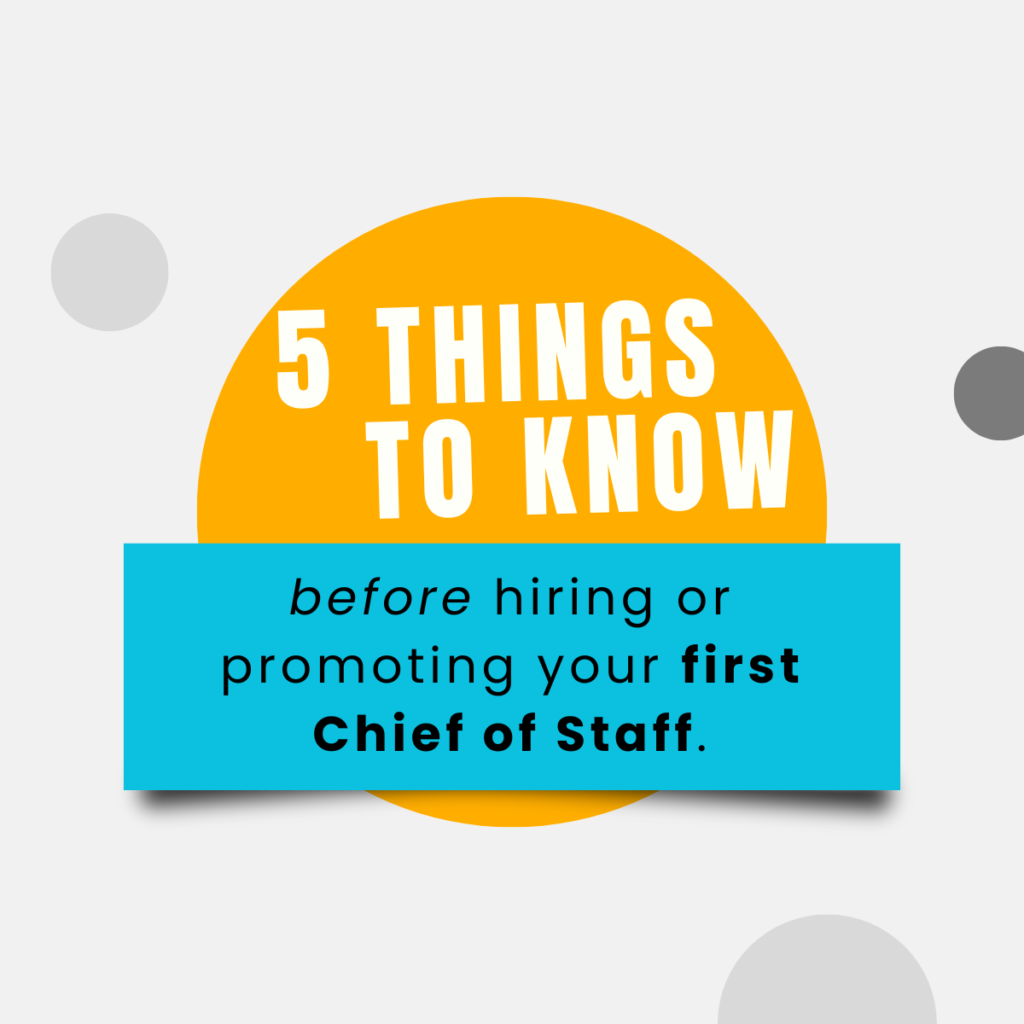As organizations grow, leaders often reach a point where they realize: I can’t do it all myself anymore. That realization usually leads to an important decision:
What kind of support do I need most right now?
For many leaders, the options boil down to an Executive Assistant, a Chief of Staff—or both. These roles are sometimes confused or combined, but in reality, they serve very different functions. When scoped and supported well, each can be a powerful force multiplier.
Let’s break down the difference—without putting either on a pedestal. Both roles are high-trust, high-impact. The key is knowing which kind of support your leadership structure actually needs.
🧠 The Chief of Staff: Strategic Integrator
A great Chief of Staff is a strategic operator who helps the leadership team stay aligned, focused, and executing effectively. They work across departments, connect dots, and make sure decisions translate into real action.
Think of the Chief of Staff as a strategic integrator—someone who keeps the leadership system humming by driving clarity, coordination, and follow-through.
Their strengths often include:
✔️ Strategic planning and execution oversight
✔️ Leadership meeting facilitation and follow-up
✔️ Cross-functional alignment
✔️ Decision-making support
✔️ Internal communications and organizational effectiveness
Chiefs of Staff are especially valuable when priorities are clear, but execution is getting messy—or when the leader is stretched across too many strategic initiatives and needs a trusted partner to help lead from the middle.
🔄 The Executive Assistant: Flow Facilitator
A great Executive Assistant is a flow facilitator. They ensure the leader’s time, energy, and attention are aligned with what matters most.
From calendars and communications to meetings and logistics, they create the structure and momentum that helps leaders operate at their best—not just stay afloat.
Their strengths often include:
✔️ Calendar and inbox management
✔️ Meeting preparation, follow-up, and documentation
✔️ Travel and logistics coordination
✔️ Prioritization and time protection
✔️ Quietly reducing friction, day after day
An EA is often the first person to know when something is off—and the first to take action. When there’s strong trust, they become an extension of the executive’s thinking, priorities, and rhythm.
✅ So… Which One Do You Need?
Here’s a quick checklist to help clarify where your current support needs really are:
You might need an Executive Assistant if…
☐ Your calendar and inbox are overwhelming
☐ You spend time on scheduling, logistics, and follow-up tasks
☐ You often prepare last-minute for meetings or forget key details
☐ You’re constantly interrupted or distracted by administrative tasks
☐ You want help staying organized and focused on your day-to-day priorities
☐ You’re saying “yes” to too much—and need someone to help protect your time
💡 An Executive Assistant is your flow facilitator: keeping your schedule, communication, and energy aligned so you can stay focused on high-value work.
You might need a Chief of Staff if…
☐ Your leadership team isn’t consistently aligned on priorities
☐ Decisions get made—but don’t always lead to follow-through
☐ You’re stretched across too many strategic initiatives
☐ Execution is stalling due to lack of ownership or coordination
☐ You need a thought partner to help navigate complexity and scale
☐ You’re spending more time running the system than leading through it
💡 A Chief of Staff is your strategic integrator: helping turn priorities into action, align the leadership team, and drive clarity across the organization.
You might need both if…
☐ You’re scaling quickly, and both your day-to-day operations and strategic systems need support
☐ You find yourself doing both administrative and operational work that someone else could lead
☐ You’re serious about protecting your time and multiplying your impact

